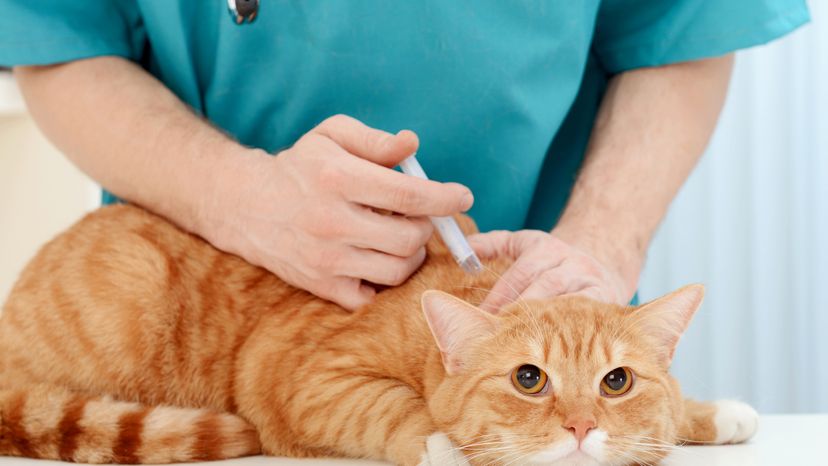
Cats are curious creatures and like to investigate, which leads to many accidental poisonings each year. Often a cat will find an open can or bottle of chemical and, accidentally or on purpose, knock it over. Naturally, the chemical gets on its fur and paws, and while licking the area clean the cat swallows the possibly toxic substance. It is your responsibility as a pet owner in providing cat care to keep all potentially toxic products tightly closed and out of reach of your cat.
Some of the signs to look for a possible poisoning include excessive drooling, vomiting, diarrhea, abdominal pain, twitching, nervousness, convulsions, coma, and an odor of a chemical on the body. Here is what you can do if your cat is poisoned:
Advertisement
Step 1: If the cat is comatose or convulsing, wrap it in a blanket and transport him or her immediately to the veterinarian with the suspect poison container, plant, or leaf.
Step 2: If the cat has an odor of poison on his or her skin, wash the entire cat with mild soap until the odor is gone. Cats will continue to lick areas that contain poison if it is not washed off. Flushing the mouth with clean water may help with decontamination.
Step 3: If the cat has not already vomited, and the poison is not a caustic or petroleum product (see list below), induce vomiting by giving one tablespoon of 3 percent hydrogen peroxide every ten minutes until vomiting commences. Do not exceed three doses. If the cat fights your attempts, stop and transport immediately to your veterinarian. If no vomiting occurs within 30 minutes, transport immediately to the veterinarian with the suspected poison.
Step 4: Call the pet poison control hotline for further instructions: ASPCA Pet Poison Control (888) 426-4435. (There is a charge for this service.)
Caustics include battery acid, corn and callous remover, dishwater detergent, drain cleaner, grease remover, lye, and oven cleaner. Petroleum products include paint solvent, floor wax, and dry-cleaning solution.
You might be surprised about common household items and how they can be poison for your cat. Some common household poisons are alcoholic beverages, ammonia antifreeze, bleach, chocolate (baking chocolate is the worst), detergents, disinfectants, drain cleaner, dry-cleaning fluid, fertilizer, furniture polish, gasoline, glue, human medications (acetaminophen, aspirin), mothballs, mouse and rat poison, onions, oven cleaners, paint thinner and remover, shoe polish, silver polish, and toilet bowl cleaner.
Some common toxic houseplants include aloe vera, amaryllis, avocado, azalea, bird of paradise, calla lily, castor bean, corn plant, cyclamen, daffodil, day lily, dieffenbachia, Easter lily, elephant ears, English ivy, gladiolus, holly, hyacinth, hydrangea, iris, kalanchoe, Macadamia nut, marijuana, mistletoe, narcissus, philodendron, rhododendron, tomato plant, tulip, yew, and the yucca.
(This is only a partial list. For a more complete listing, refer to the ASPCA Animal Poison Center at aspca.org.)
©Publications International, Ltd.
Advertisement